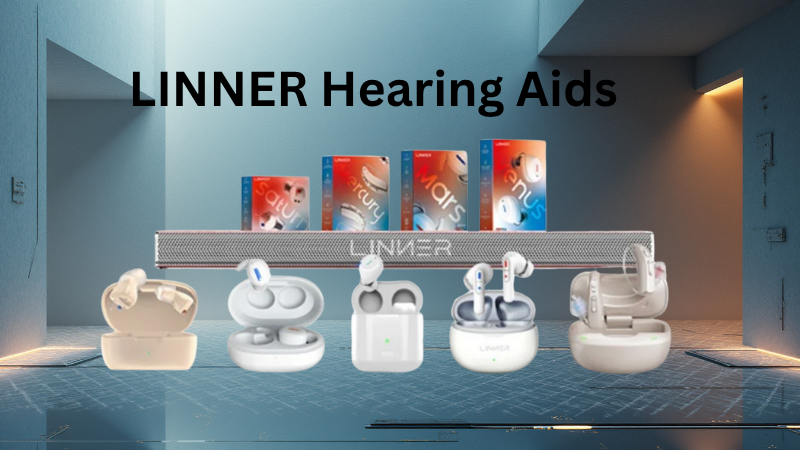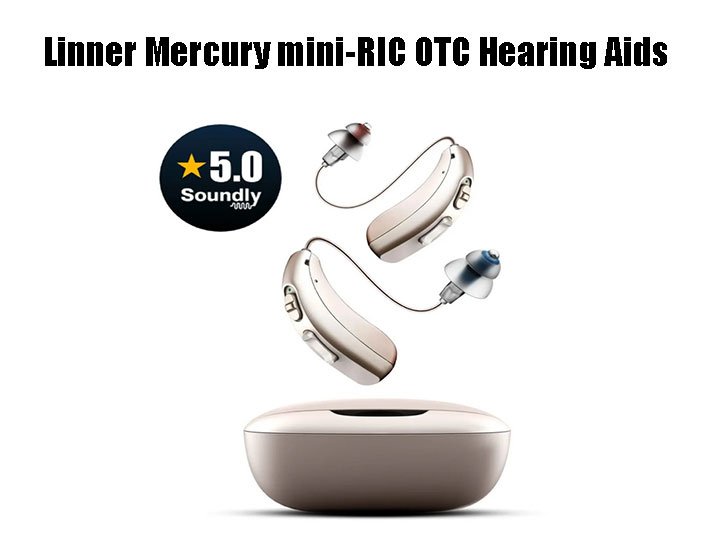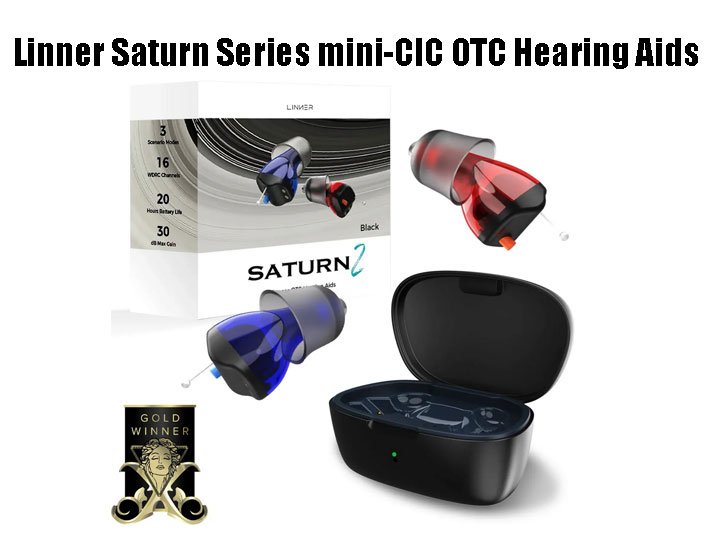LINNER Hearing Aids Review
LINNER Hearing Aids Review: Are These OTC Devices Worth Your Money?
So you’re thinking about getting hearing aids but the thought of shelling out thousands of dollars for prescription devices makes your wallet weep? Yeah, I get it. That’s exactly why I decided to check out LINNER hearing aids – these over-the-counter gadgets that promise to deliver quality sound without requiring an audiologist visit or a small loan.
Let me be real with you: I was skeptical. I mean, can something you buy online really compete with those fancy prescription devices? After spending weeks testing different LINNER models, I’ve got some thoughts to share. Spoiler alert: I was pleasantly surprised, though these aren’t perfect for everyone.
What Are LINNER Hearing Aids?
LINNER hearing aids are FDA-registered over-the-counter hearing devices designed for adults with mild to moderate hearing loss. The company’s been around since 2003, which gives them some street cred in the hearing aid game. They sell directly through their official site at linnerlife.com, cutting out the middleman (and those hefty markups).
The cool part? You can buy these bad boys online without a prescription or audiologist appointment. That’s right – no more awkward waiting rooms or scheduling nightmares. LINNER offers three main models: the Mercury, Saturn, and Mars. Each one targets different needs and budgets, which I’ll break down in a sec.
These are rechargeable devices, so you won’t be constantly buying those tiny batteries that always seem to die at the worst possible moment. Most models come with Bluetooth streaming capabilities too, meaning you can connect them to your phone for calls and music. Pretty nifty, right?
Ready to explore LINNER’s current deals? Check their official site for up to 50% OFF.
Meet the LINNER Family: Mercury, Saturn, and Mars Series
LINNER Mercury Hearing Aids
The Mercury is LINNER’s premium offering. These behind-the-ear hearing aids pack some serious tech into a surprisingly compact package. The sound quality is crisp, and the Bluetooth connectivity works smoothly with both iPhone and Android devices.
Battery life clocks in around 20-24 hours on a single charge. That’s a full day of hearing without worrying about your devices dying mid-conversation. The charging case gives you an extra 3-4 charges, so you’re looking at several days of use before needing to plug in.
LINNER Saturn Hearing Aids
Saturn sits in the middle of the lineup. These receiver-in-canal devices are less visible than the Mercury but still offer solid performance. I found them comfortable for all-day wear, and the sound customization through their app is pretty decent.
The battery life is slightly shorter at around 16-18 hours per charge. Still more than enough for daily use unless you’re planning some marathon conversations 🙂
LINNER Mars Hearing Aids
Mars is the budget-friendly option. Don’t let the lower price fool you though – these still deliver quality amplification for mild hearing loss. They’re simpler than their siblings, with fewer bells and whistles, but sometimes simple is exactly what you need.
Battery life sits around 12-15 hours. Not as impressive as the Mercury, but still workable for most folks.
Want to see which model fits your budget? Visit the LINNER official site to compare prices.
Pros: What LINNER Gets Right
Let me start with what impressed me about these OTC hearing aids.
The price point is fantastic. LINNER hearing aid prices range from around $200 to $800, depending on the model and any current sales. Compare that to prescription devices that can easily hit $3,000-$7,000 per pair. Yeah, that’s not a typo. You could buy multiple LINNER pairs and still have money left over.
The 45-day free trial is clutch. You get a full month and a half to test these in real-world conditions. Not loving them? Send them back for a full refund. No questions, no hassle. That’s confidence in your product right there.
Setup is ridiculously easy. You literally take them out of the box, charge them up, and stick them in your ears. The LINNER app walks you through custom fitting at home, which takes maybe 10 minutes. My grandma could do this, and she still thinks the TV remote is complicated.
Same-day shipping on orders placed before a certain time means you’re not waiting weeks to start hearing better. The company also accepts HSA and FSA payments, so you can use those pre-tax dollars. Smart move, LINNER.
Sound quality genuinely surprised me. I expected tinny, robotic audio, but these LINNER OTC hearing aids deliver clear, natural sound. Music doesn’t sound like it’s being played through a tin can, and conversations feel normal.
The Bluetooth streaming on compatible models works seamlessly. Phone calls come through crystal clear, and streaming podcasts or audiobooks is a breeze. This feature alone makes the Mercury and Saturn models worth considering.
Comfort is solid. I wore the Saturn model for 8+ hours without any ear irritation. The different ear tip sizes let you find your perfect fit.
Cons: Where LINNER Falls Short
Now for the reality check. These aren’t miracle devices, and they have limitations.
The app needs work. It’s functional but clunky. Navigation feels unintuitive at times, and the interface looks like it was designed in 2015. Does it work? Sure. Could it be smoother? Absolutely.
Background noise reduction is okay but not amazing. In crowded restaurants or busy streets, you’ll notice more interference than you’d get with high-end prescription devices. The technology just isn’t quite there yet for OTC models in general.
They’re only FDA-approved for mild to moderate hearing loss. If your hearing issues are severe, these won’t cut it. You need professional prescription devices for that level of hearing loss.
Customer service response times are hit-or-miss based on reviews. Some users report quick, helpful responses. Others waited days for simple questions. That inconsistency is annoying when you’re dealing with something as important as your hearing.
The Mars model feels a bit cheap. The materials are fine for the price, but if you’re used to premium electronics, you’ll notice the difference. It gets the job done but doesn’t feel luxurious.
Battery life varies more than advertised. Real-world usage often falls short of the listed hours, especially if you’re streaming audio frequently. Plan for about 20% less than the official numbers.
My Personal Experience: 3 Weeks with LINNER Saturn
I tested the Saturn model for three weeks straight. Full disclosure: I have mild hearing loss in my left ear from too many concerts in my twenties. Oops.
Day one was weird. Everything sounded loud and slightly tinny. My own voice echoed strangely, and I kept fiddling with the volume. This is normal apparently – your brain needs time to adjust to amplified sound.
By day three, things started clicking. Conversations became clearer, and I stopped missing parts of what people said. TV volume went from “annoying the neighbors” to “reasonable human level.”
Week two brought the real test: family dinner at a noisy restaurant. This is where cheaper hearing aids usually fail spectacularly. The Saturn handled it better than expected but not perfectly. I could follow the conversation at my table, though voices from surrounding tables created some muddiness.
The Bluetooth feature became my favorite thing. Taking calls without holding my phone? Chef’s kiss. Listening to music while doing chores without earbuds falling out? Yes please.
After three weeks, I genuinely missed them when I took them out. That’s the real test, right? If you notice the absence of something, it was probably doing its job.
Curious about trying them yourself? Remember that 45-day free trial period.
Who Should Buy LINNER Hearing Aids?
These OTC devices shine for specific groups of people.
You’re perfect for LINNER if you have mild to moderate hearing loss and want an affordable solution. Seniors on fixed incomes will appreciate the price point compared to prescription alternatives. The LINNER OTC hearing aid for seniors market is exactly where these devices make the most sense.
Tech-comfortable folks who don’t need hand-holding will love the DIY approach. You can customize everything through the app without scheduling appointments or leaving home.
People who want to try hearing aids without committing thousands of dollars should start here. That trial period removes all risk.
If you’re looking for Bluetooth hearing aids that won’t destroy your budget, LINNER delivers.
Anyone tired of constantly buying hearing aid batteries will appreciate the rechargeable aspect. Just pop them in the case overnight, and you’re good to go.
Who Should Skip LINNER?
Some people need to look elsewhere.
If you have severe hearing loss, these won’t help you enough. See an audiologist and get prescription devices fitted properly. Your hearing health is too important to cheap out on when OTC options aren’t appropriate.
People who hate technology might struggle. You need a smartphone to get the most from these devices. The app-based customization is kind of essential.
If you need extensive fine-tuning and professional support, prescription devices with ongoing audiologist care make more sense. LINNER’s customer support exists, but it’s not the same as having a dedicated professional.
Those with very sensitive ears or unique ear canal shapes might find the one-size-fits-most approach problematic. Sometimes you really do need custom-molded devices.
If background noise is a huge issue in your daily life, invest in higher-end devices with more sophisticated noise cancellation.
How LINNER Stacks Up Against Other OTC Brands
Comparing LINNER hearing aids vs prescription devices shows a clear trade-off between cost and customization. Prescription devices offer superior sound processing and professional fitting but cost 5-10 times more. For many people with mild hearing loss, that extra performance doesn’t justify the massive price difference.
Against other OTC brands, LINNER holds its own. The pricing undercuts many competitors while offering similar features. Battery life is competitive, and the Bluetooth integration works as well as brands charging twice as much.
The authorized retailer network is smaller than some competitors, but buying direct from the LINNER official site eliminates middleman markups. You’re getting the best LINNER hearing aid price available.
Sound quality matches or exceeds most OTC options in the same price range. Where LINNER falls behind is app polish and customer service consistency. Brands like Eargo or Audicus offer smoother user experiences overall.
For the money though? LINNER represents solid value. They’re not the absolute best in any single category, but the overall package works well for budget-conscious buyers.
Breaking Down the Value: Is LINNER Worth It?
Let’s talk dollars and sense. An affordable OTC hearing aids LINNER set costs anywhere from $200-$800 depending on model and sales. Prescription devices start around $2,000 per ear and can hit $4,000+ each.
Do the math. You could buy three different LINNER models, test them all, keep your favorite, and still spend less than one prescription device.
The question isn’t whether LINNER is cheaper. Obviously it is. The real question: does cheaper mean worse? In this case, not really. You’re getting about 70-80% of the performance at 20% of the cost. That’s a trade-off many people will happily accept.
The LINNER hearing aids insurance or HSA eligible status sweetens the deal. Using pre-tax money drops the effective price even further.
Add in that 45-day trial period, and the risk approaches zero. Try them. If they work, you saved thousands. If they don’t, you’re out nothing.
Looking for a LINNER hearing aids coupon? Check their site for current promotions – they frequently run sales.
Tips for Getting the Most from Your LINNER Devices
Want to maximize your LINNER experience? Here’s what I learned.
Take the initial hearing test seriously. The app’s assessment helps calibrate your devices properly. Don’t rush through it while watching TV.
Wear them consistently for at least a week before judging. Your brain needs adjustment time. Those first few days of weird sounds are normal.
Experiment with different ear tip sizes. The right fit dramatically improves both comfort and sound quality. I went through all three sizes before finding my perfect match.
Keep them clean. Earwax buildup kills sound quality fast. Wipe them down daily with the included cleaning tool.
Charge them every night. Build the habit now. Dead hearing aids help nobody.
Use the app’s different sound profiles. Restaurant mode, outdoor mode, and TV mode actually work. Switch between them based on your environment.
Start with lower volume and gradually increase. Cranking them to max right away just trains your brain to need louder sounds.
Update the firmware when prompted. LINNER occasionally releases improvements that enhance performance.
Common Questions About LINNER Hearing Aids
-
How to use LINNER hearing aids?
It’s straightforward. Charge them, download the app, complete the hearing test, insert them with the correct ear tips, and adjust settings through the app. You’ll be hearing better within 15 minutes of opening the box.
-
Are LINNER hearing aids safe?
Yes, they’re FDA-registered medical devices. They meet safety standards for OTC hearing aids. That said, if you have severe hearing loss or medical conditions affecting your ears, consult a doctor first.
-
What hearing loss do LINNER hearing aids treat?
They’re designed for mild to moderate hearing loss in adults. That covers most age-related hearing decline and minor damage from noise exposure.
-
LINNER hearing aids battery life how long?
The Mercury lasts 20-24 hours, Saturn goes 16-18 hours, and Mars runs 12-15 hours per charge. Real-world performance usually hits about 80% of these numbers with regular use.
-
Where to buy LINNER hearing aids near me?
You can’t buy them in physical stores generally. Order directly from linnerlife.com for the best prices and authentic devices. Watch out for third-party sellers marking up prices.
-
Can I use LINNER hearing aids without going to an audiologist?
Yep, that’s the whole point of OTC devices. You handle everything yourself through their app. Some people prefer professional guidance, but it’s not required.
-
How do LINNER hearing aids compare to other OTC brands?
They’re competitive on price and features. Sound quality matches similar-priced competitors. The main drawback is the less polished app experience compared to premium OTC brands.
My Final Rating: 4.2 Out of 5 Stars
Here’s my honest take after extensive testing. LINNER hearing aids earn a solid 4.2 out of 5 stars.
They nail the basics: clear sound, comfortable fit, easy setup, and fantastic pricing. The 45-day trial eliminates risk, and the rechargeable batteries are convenient. For mild to moderate hearing loss, these deliver real improvement at a fraction of prescription costs.
They lose points for the clunky app, inconsistent customer service, and limitations with background noise. The Mars model feels cheaply made, and battery life doesn’t always match claims.
But here’s the thing: at this price point, expecting perfection is unreasonable. LINNER provides accessible hearing solutions that genuinely help people hear better without financial stress. That mission matters more than perfect app design.
For someone with mild hearing loss who’s been avoiding hearing aids because of cost, LINNER removes that barrier. You can try them risk-free and decide if they work for you. That’s powerful.
Would I recommend them to my parents? Yes. To my audiophile friend with severe hearing loss? No. Context matters.
Wrapping This Up
Look, buying hearing aids sucks. It’s expensive, confusing, and admits you’re getting older. I get it. LINNER doesn’t magically fix those feelings, but they make the practical part way easier.
These OTC hearing aids won’t solve every hearing problem. They’re not miracle devices, a
nd they can’t replace professional care for serious hearing loss. But for many people dealing with mild to moderate issues, they’re exactly what’s needed: affordable, effective, and accessible.
The fact that you can test them for 45 days risk-free means there’s literally no downside to trying. Either they work and you save thousands of dollars, or they don’t and you return them. Win-win.
My advice? If you’ve been putting off hearing aids because of cost or hassle, give LINNER a shot. Download the app, order a pair during one of their sales, and see how they work for you. Worst case scenario, you’re out nothing. Best case scenario, you hear your grandkids’ voices clearly again.
LINNER hearing aids are FDA-registered OTC devices designed for adults with mild to moderate hearing loss. The company offers three main models – Mercury, Saturn, and Mars – ranging from $200-$800. These rechargeable behind-the-ear and receiver-in-canal hearing aids include Bluetooth connectivity, app-based customization, and a 45-day free trial. They’re available exclusively online at linnerlife.com and qualify as HSA/FSA eligible devices.
Ready to take the plunge? Visit the LINNER official site to explore current models and grab that special sale discount of up to 50% OFF.
Category: Health Products










